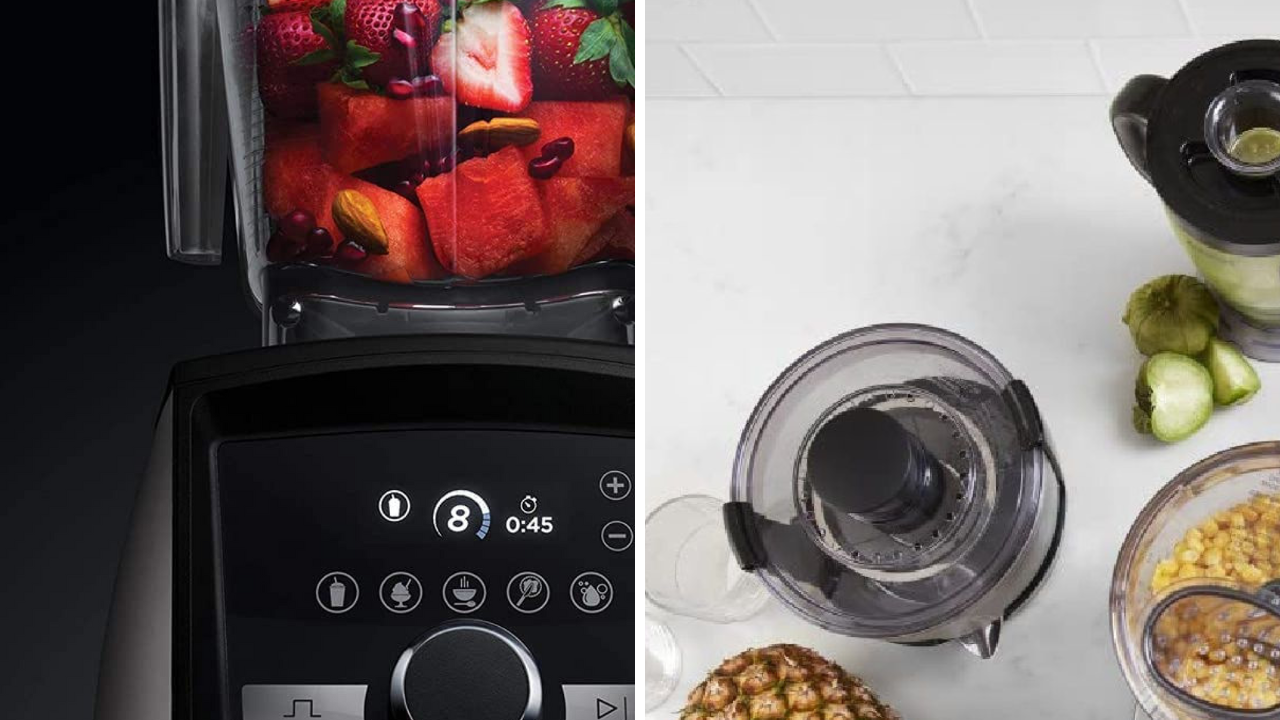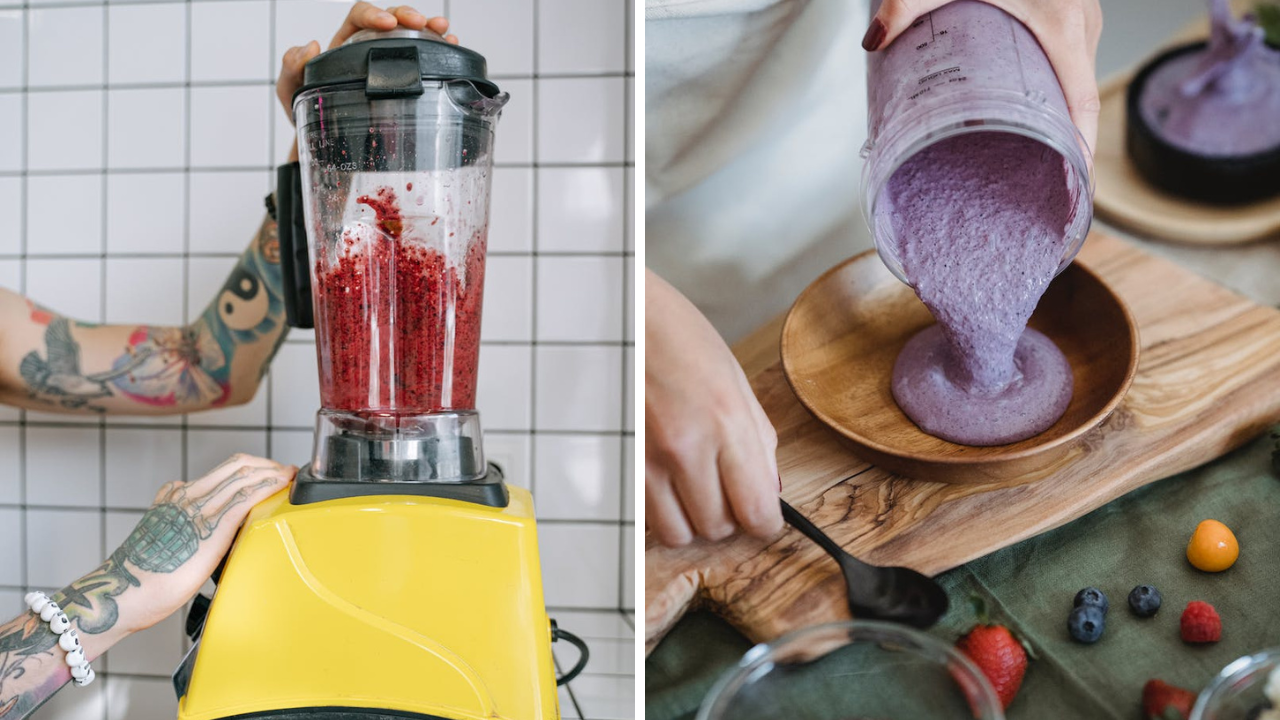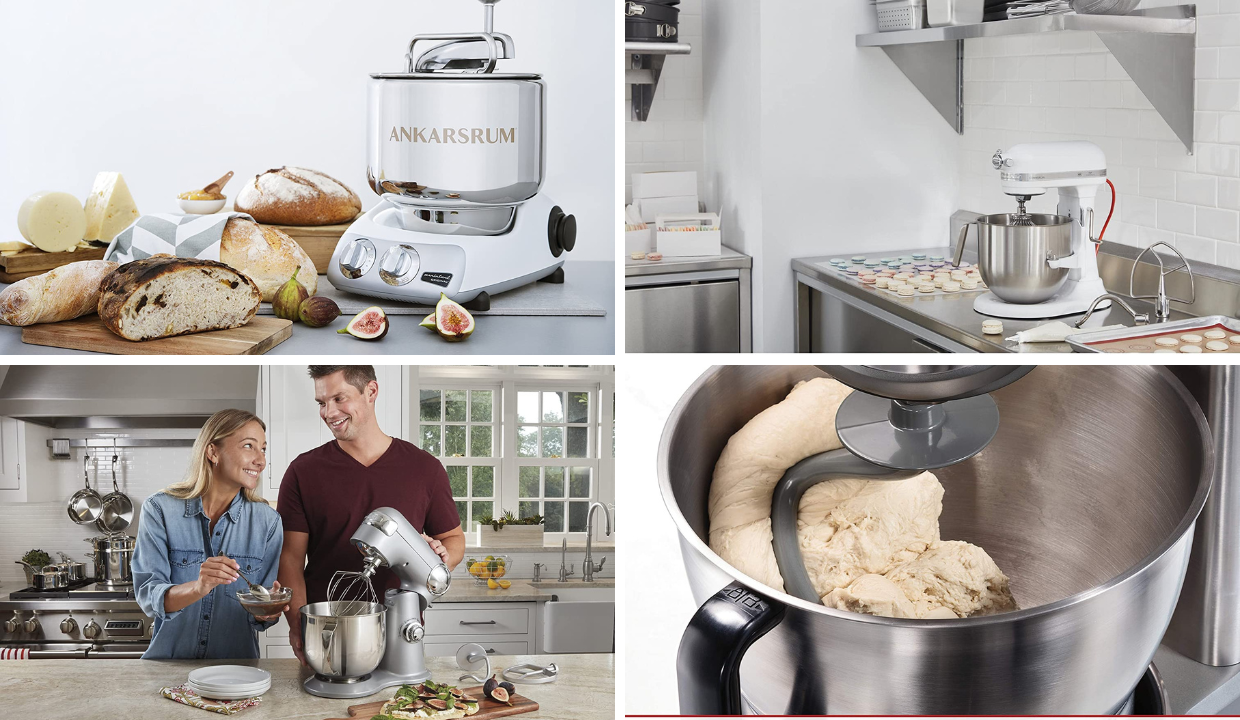An immersion blender, also known as a hand blender or stick blender, is a kitchen appliance that has become increasingly popular in recent years.
It is a handheld device that consists of a motorized handle with a rotating blade at the end. The blade is immersed directly into the food or liquid being prepared, hence the name immersion blender.
Immersion blenders are a versatile kitchen tool that can be used for a wide range of tasks, including blending soups, pureeing baby food, making smoothies, and even whipping cream.
They are also much easier to clean than traditional blenders, as the blade can be easily removed and washed separately. Despite their many benefits, some people are still unfamiliar with this useful appliance.
In this article, we will explore the history of the immersion blender, how it works, its uses, and the benefits of using one in your kitchen.
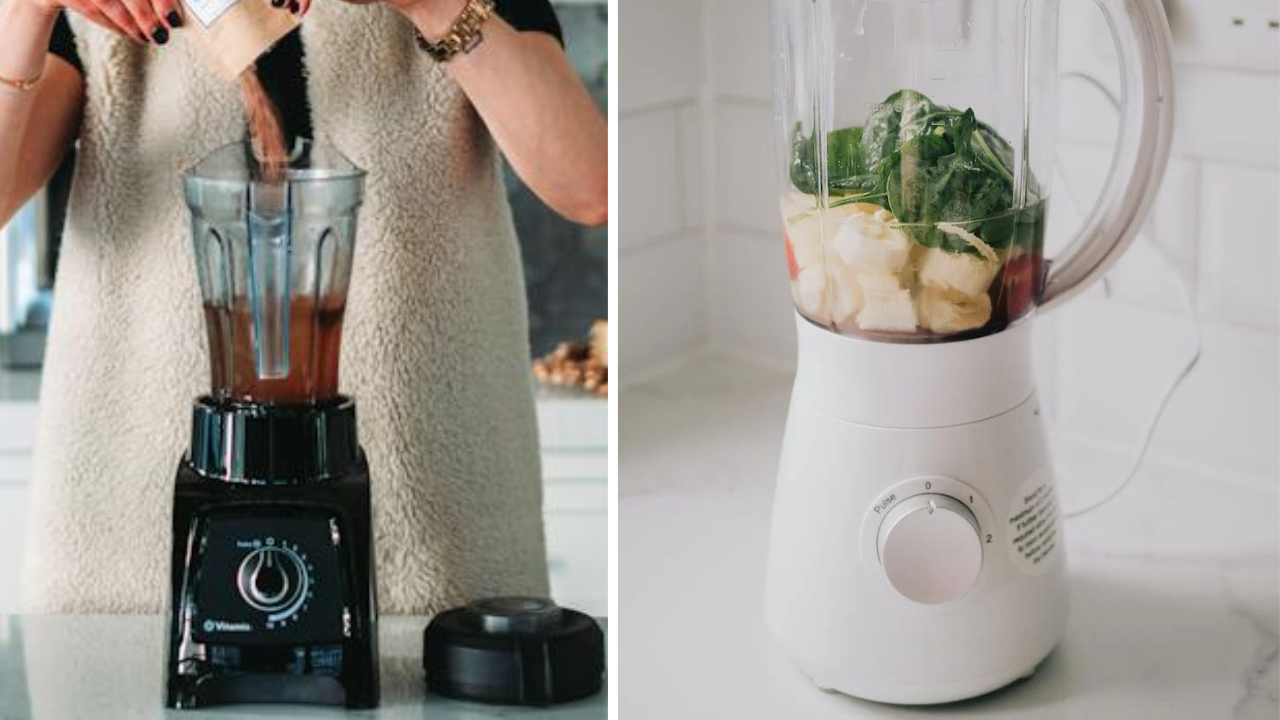
Key Takeaways
- An immersion blender is a handheld kitchen appliance used for blending, pureeing, and whipping.
- It is versatile and easy to clean, making it a popular choice for many home cooks.
- Understanding the history, functionality, and benefits of an immersion blender can help you choose the right one for your needs.
What is an Immersion Blender
An immersion blender, also known as a hand blender, stick blender, or wand blender, is a kitchen tool used for blending and pureeing ingredients directly in the container in which they are being prepared.
It consists of a motorized handle with a long, detachable shaft that has a rotating blade at the end.
Immersion blenders are a versatile tool that can be used for a variety of tasks, such as making smoothies, soups, sauces, and purees.
They are particularly useful for blending hot liquids, as they can be used directly in the pot or pan without the need to transfer the mixture to a blender or food processor.
This makes them a convenient and time-saving tool for busy home cooks and professional chefs alike.
When choosing an immersion blender, there are several factors to consider, such as the power of the motor, the length of the shaft, and the type of blade.
Some models may also come with additional attachments, such as a whisk or chopper, which can further expand their functionality.
Overall, an immersion blender is a useful tool for anyone who enjoys cooking and wants to simplify their blending and pureeing tasks.
History of the Immersion Blender
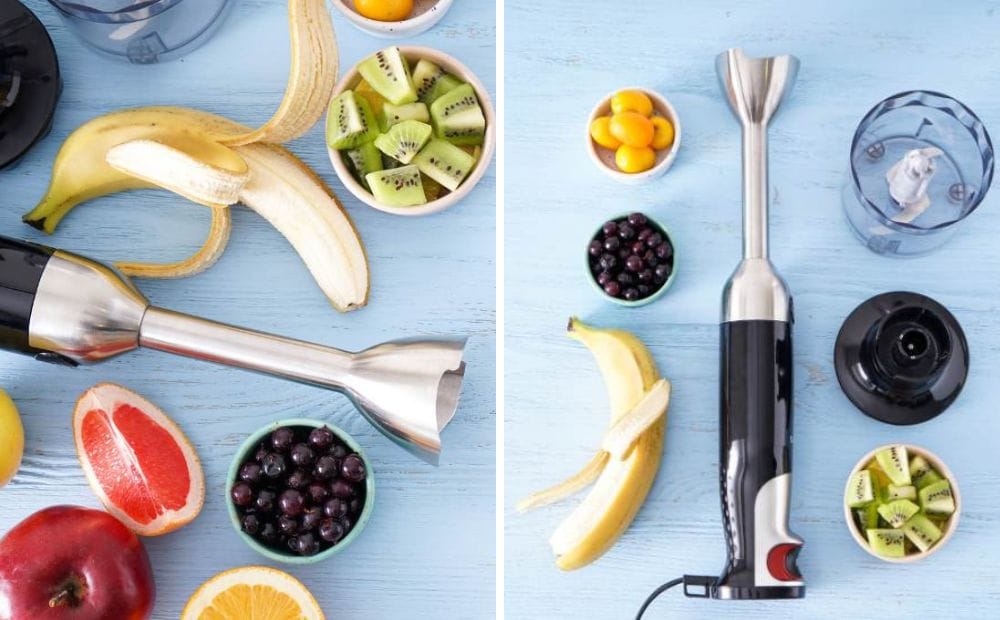
A stick blender
The immersion blender, also known as a stick blender or hand blender, was invented in Switzerland in 1950 by Roger Perrinjaquet.
The original design was intended for use in professional kitchens, but it quickly became popular among home cooks as well.
The early immersion blenders were bulky and heavy, with a motor that was separate from the blending wand.
Over time, the design was refined, and the motor was integrated into the wand, making the blender more compact and easier to use.
In the 1980s, the immersion blender became even more popular as a result of the rise of nouvelle cuisine, which emphasized lighter, fresher flavors and textures.
Chefs began using immersion blenders to create smooth, velvety sauces and soups, and the appliance became an essential tool in many kitchens.
Today, immersion blenders are available in a wide variety of sizes and styles, from compact models designed for occasional use to heavy-duty commercial blenders that can handle large batches of food.
They are used for everything from pureeing soups and sauces to making smoothies and milkshakes. With their ease of use and versatility, immersion blenders have become a staple in many kitchens around the world.
How an Immersion Blender Works
Mechanism
An immersion blender, also known as a hand blender or stick blender, is a handheld kitchen tool used for blending and pureeing food.
It consists of a motorized handle with a long shaft that ends in a blade.
The blade is surrounded by a protective guard to prevent splattering and ensure safe operation.
The motor is usually located in the handle, and it powers the blade through a series of gears and a driveshaft.
Power Source
Immersion blenders are typically powered by electricity, and they can be corded or cordless. Corded models are more powerful and reliable, but they can be less convenient to use because of the power cord.
Cordless models are more portable and easier to maneuver, but they may have less power and shorter battery life.
Blade Design
The blade of an immersion blender is typically made of stainless steel and has a unique design that allows it to blend food quickly and efficiently.
The blade is usually shaped like a propeller or a cross, and it can be straight or curved. Some models have interchangeable blades for different tasks, such as chopping, whisking, or frothing.
The blades of immersion blenders are designed to create a vortex that draws food into the blades and blends it evenly.
The guard around the blade helps to prevent splattering and ensure safe operation. The speed and power of the blender can be adjusted to suit the task at hand, such as pureeing soup, making smoothies, or whipping cream.
Overall, immersion blenders are versatile and convenient kitchen tools that can be used for a variety of tasks. They are easy to use, easy to clean, and take up less space than traditional blenders.
Whether you are a professional chef or a home cook, an immersion blender can help you create delicious and nutritious meals with ease.
Uses of an Immersion Blender
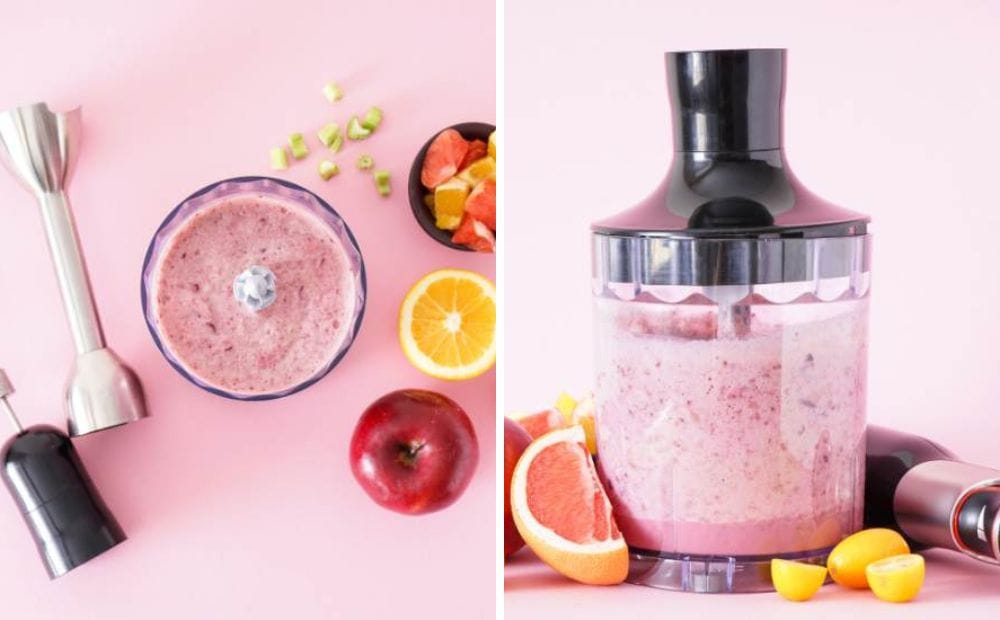
Immersion blender with attachments
An immersion blender is a versatile kitchen tool that can be used for a variety of tasks. Here are some of the most common uses for an immersion blender:
Pureeing Soup
One of the most popular uses for an immersion blender is pureeing soup. With an immersion blender, you can easily blend soup directly in the pot, without having to transfer it to a blender or food processor.
This makes the process quicker and more convenient. Immersion blenders are especially useful for making creamy soups, such as tomato soup or butternut squash soup.
Making Smoothies
Immersion blenders can also be used to make smoothies. While they may not be as powerful as traditional blenders, they are still effective at blending fruits and vegetables into a smoothie.
Immersion blenders are also more compact than traditional blenders, making them a great option for those with limited counter space.
Whipping Cream
Another use for an immersion blender is whipping cream. With the right attachment, an immersion blender can quickly whip cream to the perfect consistency.
This is a great option for those who don't have a stand mixer or hand mixer, or for those who want to save time and effort.
Overall, an immersion blender is a versatile and convenient kitchen tool that can be used for a variety of tasks.
Whether you're pureeing soup, making smoothies, or whipping cream, an immersion blender can help make the process quicker and easier.
Benefits of Using an Immersion Blender
An immersion blender is a versatile and convenient kitchen tool that can make cooking and baking easier and more efficient.
Here are some benefits of using an immersion blender:
Convenience
One of the main benefits of using an immersion blender is its convenience.
Unlike a traditional blender, which requires you to transfer ingredients to a separate container, an immersion blender can be used directly in the pot or container where the ingredients are being prepared.
This means less mess and fewer dishes to clean up. Additionally, immersion blenders are typically lightweight and easy to handle, making them a great option for those with limited counter space or mobility issues.
Versatility
Another benefit of using an immersion blender is its versatility. Immersion blenders can be used to blend, chop, and puree a wide variety of ingredients, including soups, sauces, smoothies, and even baby food.
Some models also come with additional attachments, such as a whisk or a chopper, which can expand their capabilities even further.
Easy Clean Up
Finally, immersion blenders are easy to clean. Most models have a detachable blending shaft that can be removed and washed separately from the motor, making it easy to clean hard-to-reach areas.
Additionally, many immersion blenders are dishwasher safe, which can save even more time and effort.
In summary, using an immersion blender can provide many benefits, including convenience, versatility, and easy clean up.
Whether you are a professional chef or a home cook, an immersion blender can be a valuable addition to your kitchen toolkit.
Choosing the Right Immersion Blender
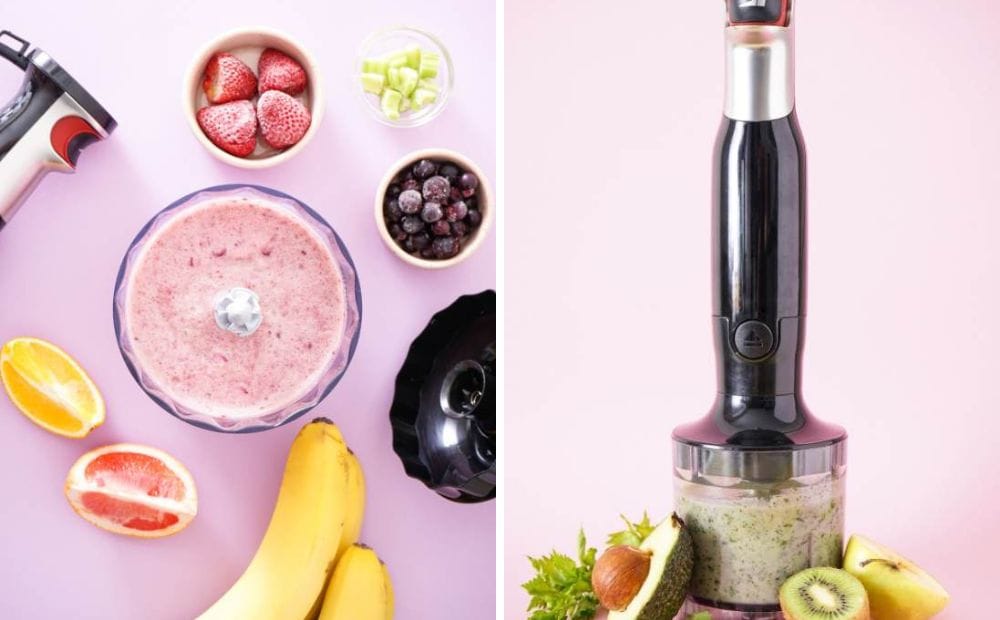
Immersion blender
When it comes to choosing the right immersion blender, there are a few key factors to consider. These include power, design, and price.
Here's what you need to know to make an informed decision.
Power
The power of an immersion blender is measured in watts. Generally, the more watts an immersion blender has, the more powerful it is.
If you plan to use your immersion blender for tough tasks like blending ice or pureeing tough vegetables, you'll want to look for a model with at least 500 watts of power.
However, if you'll be using your immersion blender for lighter tasks like blending soups or making smoothies, a model with 200-300 watts of power should suffice.
Design
The design of an immersion blender is also an important factor to consider. Look for a model with a comfortable grip that's easy to hold.
Some immersion blenders come with a detachable shaft, which makes them easier to clean. You should also consider the length of the shaft.
A longer shaft will allow you to blend in deeper pots or containers.
Additionally, some immersion blenders come with attachments like whisk and chopper attachments, which can be useful if you plan to use your immersion blender for a variety of tasks.
Price
Immersion blenders can range in price from under $20 to over $100. The price you pay will depend on the brand, the features, and the quality of the blender.
While it may be tempting to go for the cheapest option, keep in mind that a more expensive immersion blender may be more durable and offer better performance.
That being said, there are plenty of affordable immersion blenders on the market that offer good performance and durability.
By considering these factors, you can choose the right immersion blender for your needs and budget.
Safety Tips for Using an Immersion Blender
When using an immersion blender, it is important to take certain precautions to ensure safety.
Here are some tips to keep in mind:
- Always unplug the immersion blender before cleaning or changing attachments.
- Keep the cord and the blender away from hot surfaces, flames, and water.
- Never immerse the motor unit in water or any other liquid. Only the blending shaft and attachments are dishwasher safe.
- Always use the immersion blender in a stable container to avoid splashing or spilling.
- Do not use the immersion blender on hard or frozen foods. This can damage the blades and motor.
- Do not touch the blades while the blender is in operation, as they are extremely sharp and can cause injury.
- Always use the immersion blender with the appropriate attachment for the task at hand. For example, use the whisk attachment for whipping cream and the chopper attachment for chopping vegetables.
- Keep the blender away from children and pets.
By following these safety tips, you can ensure that your immersion blender is used safely and effectively.
Maintaining an Immersion Blender
Maintaining an immersion blender is a crucial aspect of ensuring that it lasts for a long time and functions optimally.
Here are some tips on how to maintain your immersion blender:
- Clean the blender after each use: After using the immersion blender, detach the blending shaft and clean it thoroughly with warm soapy water. Rinse it off and dry it with a clean towel before storing it.
- Avoid immersing the motor unit in water: The motor unit should never be submerged in water. Instead, use a damp cloth to wipe it clean.
- Check the blades for damage: Before using the immersion blender, check the blades for any signs of damage or wear. If any damage is detected, replace the blades immediately.
- Store the immersion blender properly: When not in use, store the immersion blender in a dry and cool place. Avoid storing it in a damp or humid environment.
- Lubricate the blending shaft: To ensure that the blending shaft moves smoothly, lubricate it with a food-grade oil. Apply a small amount of oil to the shaft and distribute it evenly.
By following these simple tips, you can maintain your immersion blender and ensure that it functions optimally for a long time.
Conclusion
An immersion blender is a versatile kitchen tool that can be used for a variety of tasks.
Its compact size and handheld design make it easy to use and store, while its powerful motor and sharp blades make it capable of blending, pureeing, and emulsifying ingredients quickly and efficiently.
One of the main benefits of an immersion blender is its ability to blend ingredients directly in a pot or container, eliminating the need to transfer hot liquids to a blender or food processor.
This not only saves time, but also reduces the risk of spills and burns.
Immersion blenders also come with a variety of attachments, including whisk and chopper attachments, which further increase their versatility and usefulness in the kitchen.
With a whisk attachment, an immersion blender can be used to whip cream, beat eggs, and create fluffy meringues. A chopper attachment can be used to chop vegetables, nuts, and herbs, making meal prep a breeze.
Overall, an immersion blender is a valuable addition to any kitchen, whether you're a professional chef or a home cook.
Its versatility, convenience, and efficiency make it a must-have tool for blending, pureeing, and emulsifying ingredients with ease.
Frequently Asked Questions
How do you use a hand blender for juice?
To use a hand blender for juice, simply blend the fruits or vegetables in a tall container or jar. Hold the immersion blender at a slight angle and move it up and down until the desired consistency is reached. Be sure to use a container that can handle the pressure and size of the blender.
What are some recipes that can be made using an immersion blender?
Immersion blenders can be used to make a variety of recipes such as smoothies, soups, sauces, dips, and even whipped cream. They are also great for making baby food and pureeing fruits and vegetables.
What is the difference between an immersion blender and a regular blender?
The main difference between an immersion blender and a regular blender is the design and functionality. Immersion blenders are handheld and can be used directly in the cooking pot or container, while regular blenders are countertop appliances that require the food to be transferred to the blender jar. Immersion blenders are also more compact and easier to store.
Why would someone choose to use an immersion blender?
Immersion blenders are a great tool for those who want to save time and effort in the kitchen. They are versatile and can be used for a variety of tasks, from blending soups to making smoothies. They are also easy to clean and require less space than regular blenders.
What are some alternatives to using an immersion blender?
Some alternatives to using an immersion blender include using a regular blender, a food processor, or a hand mixer. However, these tools may not be as versatile or easy to use as an immersion blender.
Can an immersion blender be used as a regular blender?
While an immersion blender can be used for many of the same tasks as a regular blender, it may not be as effective for tasks that require more power or a larger capacity. Additionally, immersion blenders do not have the same range of speed settings as regular blenders.
If you are in the market for a new blender, then check out our articles and top picks:
